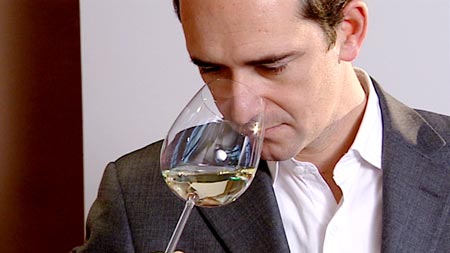
Have you ever been to a wine tasting event? Did you know that mastering wine-tasting techniques will not only increase your appreciation for wines, but will also arm you with knowledge needed to pick out the best flavors and notice wine faults?
The learning process of wine tasting involves your basic senses – look, smell, taste and few more tricks that will with time help you learn how to taste wines like an expert. It is important to highlight that even though you can smell so many unique scents, when it comes to taste, you are limited to the 4 primary tastes: sweet, salty, bitter and sour. Hence, it is the alliance of your smell and taste receptors that will help you differentiate flavor. Let’s start.
Look: Pour wine in a wine glass and check out the colour, from the rim to the middle of the glass. Is your red wine, pink-red, garnet, ruby-red or maybe features a purple hue? And what if it’s white wine. Is it yellow, light green or amber colour? But knowing to recognize the colour of wines does not make you an expert. You need to learn how to check out the clarity as well. Is the colour of the wine cloudy, blurred and dark or is it intense, clear, bright and crystal clear? Also, swirl the wine. Is there any sediment? Mastering colour and clarity will help you differentiate younger wines from the older ones. And the older the wine, the better it is.
Smell: Your nose buds are crucial for an accurate evaluation of a wine. Before you taste the wine, swirl the glass for few seconds and then take a quick smell of released aroma. This will give you a pretty good idea of wine’s quality. To get a better notion of wine’s notes (berry, oak, vanilla, spices, etc) and get a more intense experience, put your nose directly into the wine glass and take a deep breath through your nose. Does wine smell more lemony or grassy? Remember, if wine smells bad, chances are you will not like the taste of it. On the other hand, if your nose is impressed with wine’s unique notes, so will your tongue receptors.
Taste: So, you’ve analyzed the colour, clarity and took a good sniff of the wine. You can now finally take a taste. Take a small sip but before you swallow it, let the wine roll around your mouth so the alcohol, sugar, wine acidity and tannin can impress your palate. The first thing you’ll become aware of is whether the wine is creamy, dry, crisp, light, or sweet. You will next acknowledge the true flavours of the wine – is it fruity, spicy or woody.
The Finish: Finally after you’ve swallowed the wine, what is your final impression? Do you want to take another sip? Or maybe the aftertaste left such bitterness in your mouth, you’d rather have a glass of water. Record all your impressions, from wine’s acidity to food it best pairs with. If you really liked the wine, write down the name, brand and year.
























